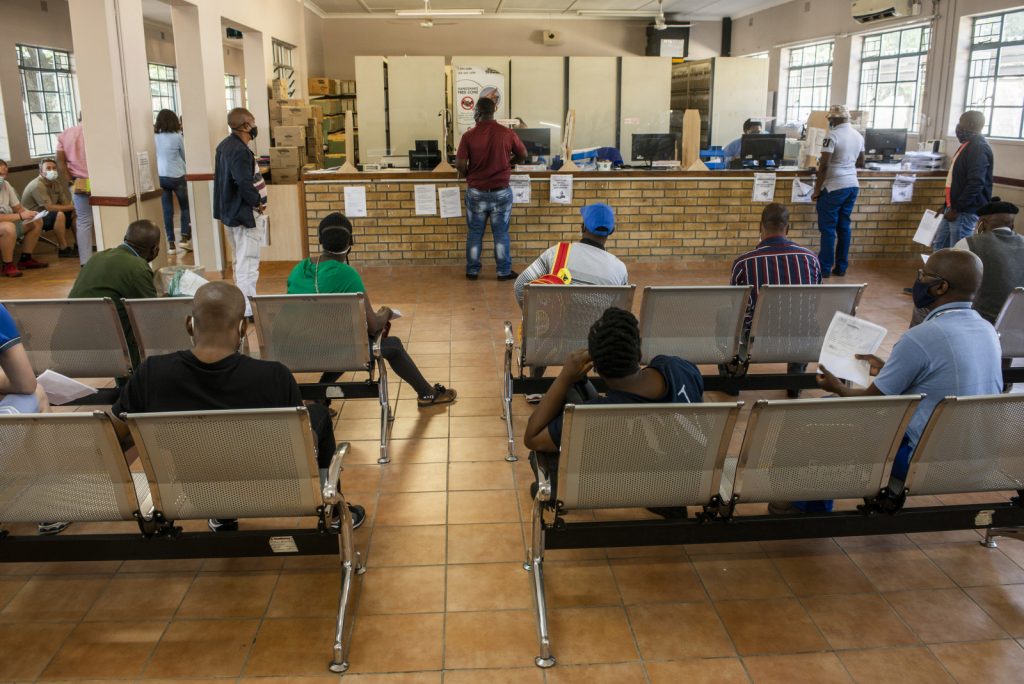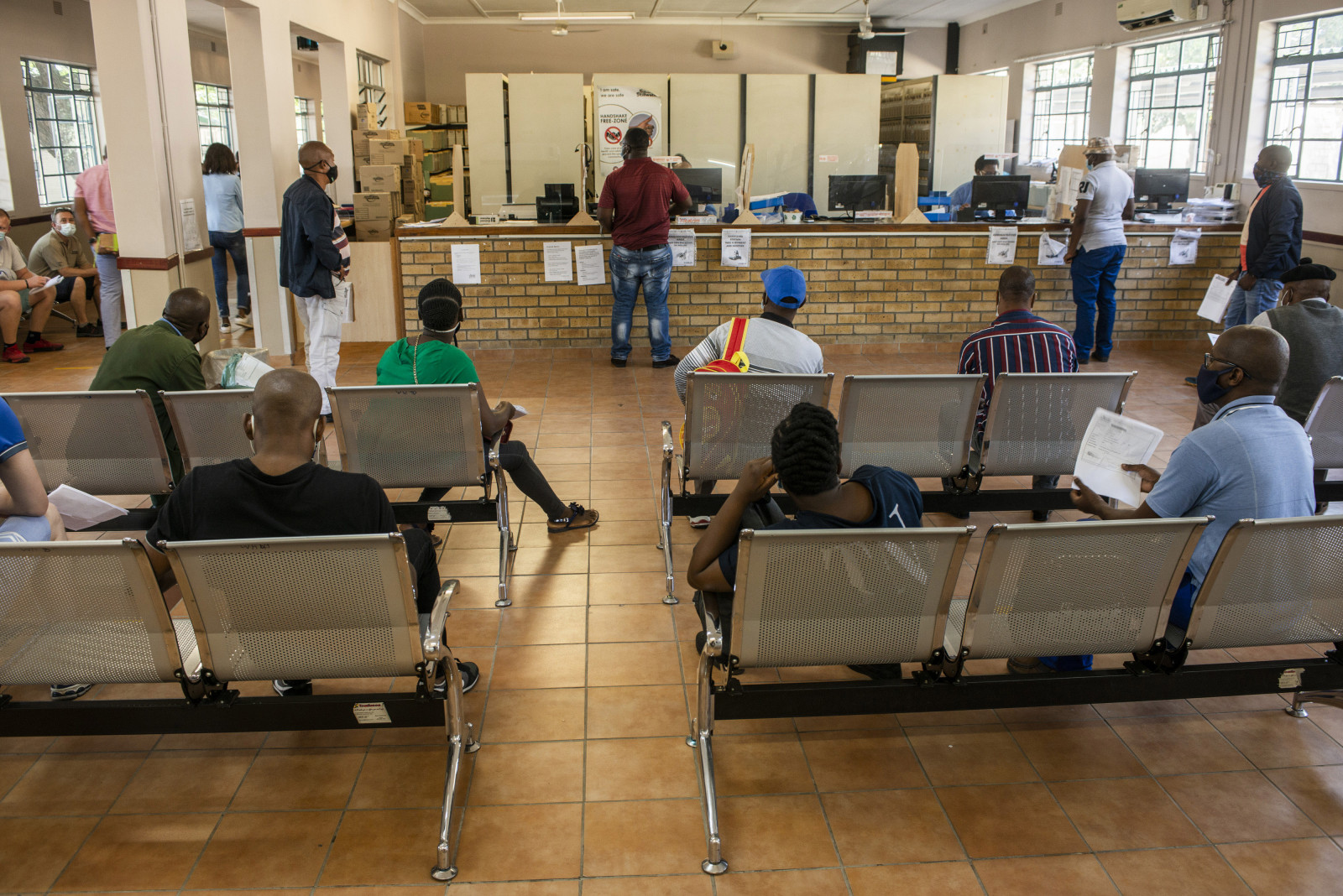[ad_1]

Uncertainty: The NHI’s actual economic pros and cons remain unclear (Waldo Swiegers/Bloomberg via Getty Images)
Earlier this month, the Council of Medical Schemes (CMS) — the body that regulates private medical aids in South Africa — announced that 2024 monthly premiums should best not increase by more than 5%. But if schemes get permission, they might go up by 8%.
Each year, the CMS determines what type of increase is reasonable. But how do medical schemes calculate premiums and is this different from the way in which the
proposed National Health Insurance (NHI) scheme will do it once the much debated NHI Bill has been passed?
There are similarities, but also big differences.
The NHI will buy healthcare services for its members — all South Africans and also those non-South Africans who live here and qualify — with a central pool of funds, just like private medical schemes do.
Privately run medical schemes such as Discovery Health or the Government Employees Medical Scheme are not-for-profit trusts made up of funds from their members’ monthly contributions. This means the money belongs to the members, for their benefit, not the scheme’s administrators.
When someone who contributes to the fund needs a health service, the scheme pays providers such as doctors and hospitals directly from the pool of funds once they’ve delivered the service.
The fee depends on the type of service that was offered and is set out in a medical aid’s schedule every year.
But while your medical aid uses a fee-for-service model, which means it pays for each service individually once rendered, the NHI will use a capitation model. This means it will calculate how much to pay a service provider based on how sick or healthy people in a certain area are, using a formula that calculates how many patients that provider is likely to see in a particular year.
According to the current plan for the NHI’s payment model, it will give a set amount of funds to administration units in each of South Africa’s 52 health districts.
These units will then contract providers for different services, whether it’s eye care, vaccinations, health screens, general GP visits or anything else that will be included in a fixed, basic package of services, and pay them a set fee in advance based on the number of patients expected to need a specific service in the area.
But just as your medical aid does now, the NHI will negotiate with service providers to decide on a fee structure that makes sense, so that they’re “involved both in designing and [setting] the scope of the contract”, says Victoria Barr, a health economist and consultant to the health department for the NHI.
Here are four things economists and actuaries — and for whose appointments in the NHI the health department has given the go-ahead last year — look at when deciding on how much members should contribute to a medical scheme’s pool of funds.
1. How much should a package of health services cost?
Every year, number crunchers at medical schemes estimate how many claims they expect to get for a specific service — say, chemotherapy treatment for cancer or surgery for joint
replacement — from their member pool. This gives them an idea of how much money they’ll need to have available to cover these services for all their members.
They therefore track usage patterns to see whether the demand for a service might go up or down, or stays steady over time. For example, if the number of claims for specialist services, such as seeing a cardiologist, seems to remain steady over time but claims for GP visits increase, then the scheme needs to plan for these when calculating how much money they’ll need in the fund to cover these payments.
But since a court ruling in 2010 said the rates set out in the now-defunct National Health Price Reference List (a list of set rates that capped how much a service provider was allowed to charge a patient) were “unreasonably low”, the costs of healthcare services in South Africa aren’t regulated. This means providers and hospitals can choose to charge whatever they like for the service they provide.
To keep costs manageable, schemes therefore set their own tariffs for services, with an upper limit for how much they will pay for a service depending on how the benefit package is made up. If someone chooses to see a health professional who charges more than the set price, they have to pay the difference between the medical aid’s contribution and the actual fee out of pocket.
2. Should the cost for health services increase?
The administrators of a medical scheme also have to factor in whether the cost of things like equipment, consumables (such as protective masks, gloves and swabs) and running a practice will increase next year because of inflation, for example — and by how much.
Every year in July, the CMS recommends what a reasonable increase in a scheme’s premiums would be for the next year. For 2024, they’ve said tariff increase assumptions should be limited to 5% plus what is reasonable for services’ use, which they “cautiously anticipate” to be about 3%, says Mondi Govuzela, senior manager of benefits at the CMS. This means premiums should ideally not go up by more than 8% next year.
Schemes can ask for a higher increase to be approved if they can show the CMS that this would be justified. These requests have to be submitted by October each year, with the council then announcing their decisions in November for new prices to come into effect, usually from January every year.
3. How many people will get sick each year?
Private healthcare services can be expensive. On average it costs about R600 000 for a year’s renal dialysis in the private health sector for treating a single patient with kidney disease, said Deon Kotze, chief product officer at Discovery Health, at a media workshop in July. If a member pays, say, R1 900 to their medical scheme every month, it would take about 27 years’ of their contributions to cover the cost.
Medical schemes make it easier to afford treatment by relying on cross-subsidisation. Simply put, this means the contributions from people who are young and healthy, who
generally don’t get sick often and so aren’t expected to have big medical expenses, can go towards helping to cover treatment costs for older people or those with a higher chance of falling ill. In turn, this group of young, healthy people benefit in the same way when they get older, when a new group of younger members will subsidise their expenses.
But every member of a medical aid qualifies for a set package of basic services, which schemes have to pay in full — these services are called prescribed minimum benefits.
They cover treatment for any medical emergency, 26 chronic diseases and 271 other conditions, including diabetes and different types of cancer. This means every member of the scheme can get treatment for these, regardless of the package they’re on or if their benefits for the year have run out.
Administrators of medical schemes estimate that, over the course of a year, only a small
proportion of their member pool need more money to pay their doctors’ bills than the amount they pay a month.
An analysis by Discovery Health showed that roughly eight out of 10 healthy members of
medical schemes contribute more money into the pool than what they claim. In this way
people with higher health costs can get life-saving treatment at an affordable price when they need it, while paying the same monthly premium as everyone else, says Kotze.
The NHI hopes to do the same thing: make treatment available to people who would otherwise not be able to afford it.
In South Africa, as much money is spent on the public health sector as on the private sector. But the state system has to service about three-quarters of the population, which means that there’s an unequal supply of resources and providers.
While the NHI’s funding model has not been finalised, this national insurance will probably be funded by tax allocations and contributions (in the form of payroll taxes) from every citizen, based on their income bracket. In this way, people who can’t afford to contribute will still be able to see a doctor through other people’s contributions.
4. What do trends in illnesses and treatment look like?
Health economists and actuaries have a good idea of the trends for illnesses and treatments in a year. For example, every year more than 10 million South Africans are expected to get flu, so a medical scheme can plan fairly well how much money they’d need to have available for medicines, GP visits or vaccinations.
But trends also change over time. For instance, as a population gets older, their need for
healthcare increases and so the cost for services would go up. South Africa’s population is getting older.
Between 2012 and 2022, the number of people older than 60 increased by 1.5 million people, making up close to 10% of the total population. Having an older population means the chance of chronic conditions such as hypertension, diabetes and cancer increases.
Medical schemes look at these patterns to plan how much money will be needed in the pool to cover all their members for the following year.
“We have to look at what the cost per claim is likely to increase by, as well as whether the
number of claims per person is likely to change because we’ve got a population that’s
getting older and sicker,” said Roseanne Harris, health policy actuary at Discovery Health.
Trends can also change suddenly. In such cases premiums might go up — or even drop. If, say, more people get sick in a year because of a disease outbreak or environmental change, costs can go up. On the other hand, if more people choose to see a nurse instead of a GP for a minor illness or a routine service like a vaccination, costs could go down.
Take the Covid-19 pandemic and lockdown in 2021, for instance. During this time fewer people used services such as emergency rooms, out-of-hospital GP visits and non-essential surgeries.
Instead they chose to speak to their doctors virtually or on the telephone, which was cheaper and so allowed medical schemes to build up a reserve of funds in the pool that weren’t being spent and so reduce the increase of premiums for 2022.

This story was produced by the Bhekisisa Centre for Health Journalism. Sign up for the newsletter.
[ad_2]
Source link



